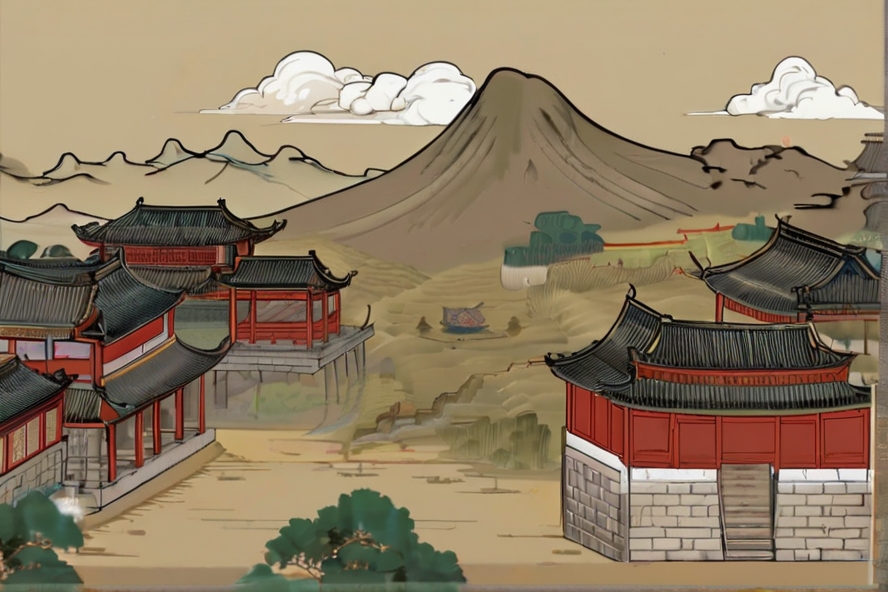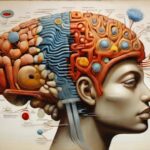
The Ming Dynasty, a significant period in Chinese history, lasted from 1368 to 1644. It marked a time of native Chinese rule following the Mongol-led Yuan Dynasty.
Throughout its reign, the Ming Dynasty exerted substantial cultural and political influence on East Asia and neighboring regions.
This article will delve into the key periods of the Ming Dynasty, including the Early Ming Dynasty (1368-1424), the Middle Ming Dynasty (1424-1521), and the Late Ming Dynasty (1521-1644), highlighting notable emperors, economic developments, and cultural shifts.
The Early Ming Dynasty (1368-1424)
The Early Ming Dynasty, spanning from 1368 to 1424, was a period of significant change and establishment.
It was founded by Zhu Yuanzhang, who later assumed the reign title of Hongwu.
The Ming Dynasty was a time of cultural conservatism and inward-looking attitudes, despite the various foreign contacts made during this period.
The basic governmental structure established by the Ming was continued by the subsequent Qing Dynasty.
The civil service system was perfected during the Ming, and the dynasty became one of the most stable but also one of the most autocratic of all Chinese dynasties.
- Read also: A Journey Through the Persian Empire Timeline
- Read also: The Fascinating History of Europe in a Timeline
The reign of Hongwu Emperor
The Hongwu Emperor, also known as Zhu Yuanzhang, instituted unprecedented political reforms during his reign.
He abolished the position of chancellor, reduced the role of court eunuchs, and adopted strict measures to address corruption.
His reign was characterized by the consolidation of control over all aspects of government, and he established the Embroidered Uniform Guard, a well-known secret police organization in imperial China.

The Yongle Emperor
The Yongle Emperor, who reigned from 1402 to 1424, was the third emperor of the Ming Dynasty.
He is remembered for his architectural and cultural contributions, as well as his despotic rule.
The Yongle Emperor respected and worked hard to preserve Chinese culture, history, and statecraft.
His reign was marked by economic, educational, and military reforms that provided unprecedented benefits for the people, but his despotic style of government also led to the establishment of a spy agency.
The Middle Ming Dynasty (1424-1521)
The Middle Ming Dynasty, spanning from 1424 to 1521, was characterized by stability, economic growth, and the rise of Confucianism.
The period saw the construction and significance of the Grand Canal, a monumental feat of engineering that facilitated trade and communication across the empire.
Stability and economic growth
Amidst this era of stability and economic growth, the rise of Confucianism emerged as a defining feature of the Middle Ming Dynasty.
Confucianism, a profound philosophical and ethical system rooted in the teachings of Confucius, gained prominence and became the prevailing ideology shaping the social and political fabric of the empire.
The rise of Confucianism
Confucian principles, emphasizing moral conduct, social harmony, and filial piety, permeated various aspects of Chinese society during this period.
The influence of Confucianism extended beyond individual beliefs, playing a central role in shaping the governance and social order of the empire.
The ethical underpinnings of Confucianism became the guiding force behind the decisions of rulers and officials, contributing to the establishment of a stable and well-organized society.
The grand canal
The Grand Canal, an engineering marvel of its time, played a crucial role in facilitating the efficient transportation of goods and resources across the vast expanse of the empire.
Stretching over thousands of miles, this intricate network of canals and waterways connected major cities and regions, serving as a vital artery for trade and commerce.
The seamless flow of goods along the Grand Canal significantly bolstered economic activities, fostering a climate of prosperity that resonated throughout the Middle Ming Dynasty.

The Late Ming Dynasty (1521-1644)
The Late Ming Dynasty, spanning from 1521 to 1644, was marked by internal conflicts, corruption, and economic decline.
The period saw the rise of powerful eunuchs and the eventual invasion by the Manchu, leading to the downfall of the Ming Dynasty.
Internal Conflicts, Corruption, and Economic Decline
Internal strife characterized this era, as the empire grappled with conflicts that strained its internal stability.
Widespread corruption further exacerbated the predicament, eroding trust in the governing institutions and contributing to the overall decline of the Ming Dynasty.
The economic woes faced by the empire during this period played a pivotal role in its weakening, with financial challenges compounding the internal struggles.
The rise of powerful Eunuchs
A notable aspect of the Late Ming Dynasty was the ascent of powerful eunuchs who wielded substantial influence within the imperial court.
The dominance of these eunuchs further intensified the political instability, as their unchecked power undermined the traditional structures of governance.
Their influence contributed to the erosion of effective leadership, exacerbating the challenges faced by the empire during this tumultuous period.
The Manchu invasion
The turning point for the Ming Dynasty came in 1644 when it confronted a formidable external threat from the Manchu.
This invasion marked a critical juncture in Chinese history, leading to the downfall of the Ming Dynasty.
The Manchu forces proved to be a formidable adversary, and their successful invasion ushered in the establishment of the Qing Dynasty.
This marked the end of the Ming Dynasty and initiated a new chapter in Chinese history under Manchu rule.

- Read also: Viking History Timeline
- Read also: Unraveling the Medieval Era Timeline
Conclusion
The Ming Dynasty, spanning over two centuries, left a lasting impact on Chinese history and culture.
From its establishment in 1368 to its eventual downfall in 1644, the dynasty witnessed significant political, economic, and cultural developments.
The reign of emperors such as the Hongwu and Yongle Emperors, the rise of Confucianism, and the construction of the Grand Canal are just a few examples of the dynasty’s enduring legacy.
Despite its eventual decline, the Ming Dynasty remains a pivotal period in Chinese history, reflecting the complexities of imperial rule and the enduring influence of Chinese civilization.
FAQs
Its achievements include the construction of the Grand Canal, the rise of Confucianism, and the preservation of Chinese culture and history.
The Ming Dynasty faced internal conflicts, corruption, and the rise of powerful eunuchs, leading to its eventual decline. The invasion by the Manchu in 1644 marked the end of the Ming Dynasty and the establishment of the Qing Dynasty.
The Hongwu Emperor instituted unprecedented political reforms and established a stable but autocratic government. The Yongle Emperor made significant cultural and architectural contributions, while his reign was marked by economic, educational, and military reforms.


